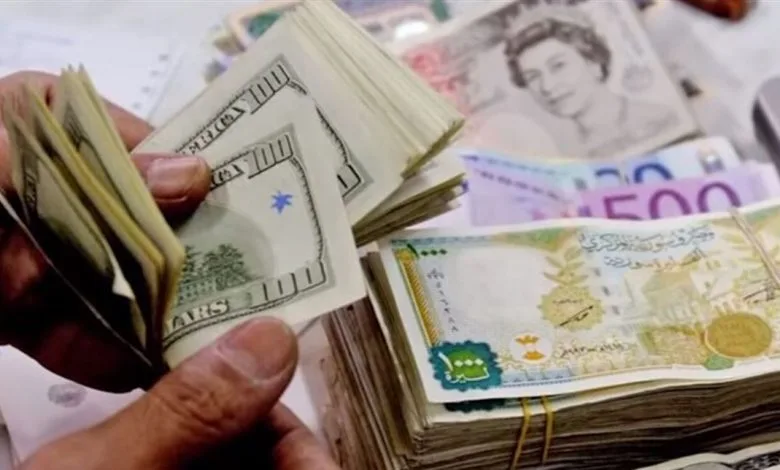سعر صرف الدولار في سوريا: تحديثات وواقع السوق في 2025
شهد سعر صرف الدولار في سوريا تقلبات كبيرة خلال السنوات الماضية، حيث تأثرت العملة الوطنية الليرة السورية بالعديد من العوامل الاقتصادية والسياسية. مع بداية العام 2025، لا يزال سعر الدولار يشكل نقطة محورية في الاقتصاد السوري، حيث يُعتبر مؤشراً على الوضع الاقتصادي العام ومستوى القدرة الشرائية في السوق.
الأسعار الحالية:
في دمشق، بلغ سعر صرف الدولار الأمريكي حوالي 14,000 ليرة سورية للشراء، بينما سجل سعر البيع حوالي 14,100 ليرة سورية. وفي حلب، سجل الدولار الأمريكي 14,050 ليرة للشراء، و 14,150 ليرة للبيع. بينما لا يزال سعر الدولار في بعض المناطق الأخرى يختلف بناءً على العرض والطلب.
العوامل المؤثرة في سعر الدولار
تتعدد العوامل التي تؤثر على سعر الدولار في سوريا، ومنها:
الأزمة الاقتصادية: منذ اندلاع النزاع في 2011، تأثرت الاقتصاد السوري بشكل كبير، مما أدى إلى تدني قيمة الليرة السورية أمام العملات الأجنبية، وفي مقدمتها الدولار.
السياسات النقدية: لا تزال السياسة النقدية في سوريا تحت تأثير المصرف المركزي السوري، الذي يحاول من خلال تدابير محدودة ضبط سعر الصرف، ولكن هذه الجهود غالبًا ما تصطدم بالصعوبات الناتجة عن العقوبات الدولية والضغوطات الاقتصادية.
التضخم: يؤثر التضخم العالي في أسعار السلع والخدمات بشكل كبير على القدرة الشرائية، ما يجعل المواطن السوري يعاني من زيادة الأسعار نتيجة لارتفاع سعر الدولار.
التهريب: يُسهم تهريب الدولار عبر الحدود في زيادة الفجوة بين سعر الصرف الرسمي وغير الرسمي، مما يزيد من التضخم ويضعف قدرة الليرة أمام الدولار.
التوقعات المستقبلية
من المتوقع أن يبقى سعر الدولار في سوريا في حالة تقلب مستمر، حيث أن التحديات الاقتصادية والضغوط المالية قد تُبقي الليرة السورية في وضع ضعيف أمام الدولار الأمريكي. كما أن استمرار العقوبات الدولية سيُصعب من الوضع المالي، مما يجعل تحديد سعر صرف مستقر أمرًا صعبًا على المدى القريب.
كيف يؤثر سعر الدولار على الحياة اليومية؟
يؤثر سعر الدولار بشكل مباشر على حياة المواطن السوري، من حيث الأسعار اليومية للسلع الأساسية مثل المواد الغذائية، الوقود، و الأدوية. فالارتفاع المستمر في سعر الدولار يجعل الكثير من السلع أكثر تكلفة، مما يزيد من معاناة الأسر ذات الدخل المحدود.
USD Exchange Rate in Syria: Market Updates and Reality in 2025
The USD exchange rate in Syria has experienced significant fluctuations over the past years, with the national currency, the Syrian Pound, being heavily influenced by multiple economic and political factors. As we begin 2025, the USD exchange rate remains a central figure in the Syrian economy, reflecting the overall economic conditions and the level of purchasing power in the market.
Current Prices:
In Damascus, the USD exchange rate is approximately 14,000 Syrian Pounds for buying, and around 14,100 SYP for selling. In Aleppo, it is recorded at 14,050 SYP for buying, and 14,150 SYP for selling. Exchange rates may vary slightly in other areas, depending on supply and demand.
Factors Influencing the USD Exchange Rate
Several factors play a role in determining the USD exchange rate in Syria, including:
Economic Crisis: Since the conflict started in 2011, the Syrian economy has suffered significantly, which has led to a sharp depreciation of the Syrian Pound against foreign currencies, especially the dollar.
Monetary Policies: Monetary policy in Syria remains under the influence of the Central Bank of Syria, which tries to stabilize the exchange rate, but its efforts often face challenges due to international sanctions and economic pressures.
Inflation: High inflation affects the price of goods and services significantly, making the Syrian Pound lose its value against the USD, and increasing the cost of living.
Smuggling: USD smuggling across borders increases the gap between the official and unofficial exchange rates, exacerbating inflation and weakening the Syrian Pound against the USD.
Future Predictions
The USD exchange rate in Syria is expected to remain volatile as economic challenges and financial pressures will likely keep the Syrian Pound weak against the dollar. The continuation of international sanctions also makes achieving a stable exchange rate difficult in the short term.
How Does the USD Exchange Rate Impact Daily Life?
The USD exchange rate directly affects the daily life of Syrian citizens, especially in terms of basic commodities such as food, fuel, and medications. The continuous rise in the USD rate makes many goods more expensive, increasing the suffering of families with limited incomes.
Translated by economyscopes team
المصدر: محمد جاموس – سكوبات عالمية إقتصادية
 سكوبات عالمية إقتصادية – EconomyScopes إجعل موقعنا خيارك ومصدرك الأنسب للأخبار الإقتصادية المحلية والعربية والعالمية على أنواعها بالإضافة الى نشر مجموعة لا بأس بها من فرص العمل في لبنان والشرق الأوسط والعالم
سكوبات عالمية إقتصادية – EconomyScopes إجعل موقعنا خيارك ومصدرك الأنسب للأخبار الإقتصادية المحلية والعربية والعالمية على أنواعها بالإضافة الى نشر مجموعة لا بأس بها من فرص العمل في لبنان والشرق الأوسط والعالم




